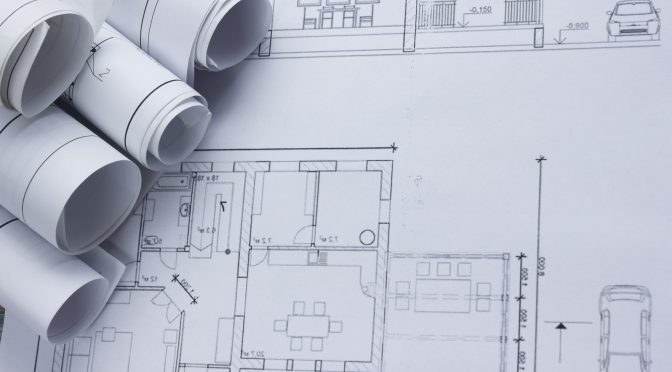We’ve teamed up with Cardinus Risk Management to explain why getting your sum insured accurately is so important.
Although not a new phenomenon, with many insurers’ attitudes to risk changing due to the hard market, and the tragic events at Grenfell giving us all a much better appreciation of larger losses, it is more important than ever to ensure that your sums insured are accurate.
What impact can underinsurance have?
If a claim payment does not cover the full property repair/rebuild cost or reinstatement, it could mean:
- Funds may not be available to complete the rebuild;
- Increased borrowing may be required;
- Negative impact on balance sheets;
- Complex negotiations with insurers;
- Discontented leaseholders and tenants;
- Extended rebuild times;
- Exposure to potential legal action for inadequate levels of cover from lenders and leaseholders; and
- Damage to reputation and brand.
How does a building become underinsured?
Underinsurance can become an issue as a result of several factors:
- Developer’s costs are adopted instead of the true reinstatement cost;
- No recent professional valuation or Reinstatement Cost Assessment (RCA) has been undertaken;
- Sums insured are based on a notional market value;
- Incorrect estimation based on historical information and relying on index linking; and
- No allowance for fluctuating costs of raw materials and labour.
Buildings are constantly changing value and there is always a risk that if you place insurance without examining how things have changed, you could be left with a shortfall if you need to make a claim.
What are the financial implications of underinsurance?
When a claim occurs and insurers appoint a loss adjuster, the adjuster will carry out what is called a value at risk review. If that reveals that the buildings sum insured is inadequate, the policyholder will not have paid sufficient premium and in turn that means the Average Condition will apply, i.e. any settlement would be reduced in proportion to the underinsurance.
Most social housing insurance is placed without an ‘Average Condition’ limiting your risks. However, you could still be exposed if you do not declare a sufficient sum insured for any building (or group of buildings in close proximity considered by insurers as one risk) that exceed a particular rebuild value set by insurers, often in the region of £5,000,000.
Example of the financial impact
Consider a large fire at a building with a current sum insured declared of £5,200,000. The insurer appoints a loss adjuster who concludes that the building is a total loss and requires both demolition and rebuilding. They also determine that the rebuild will cost £6,500,000. As the property value was declared at £5,200,000, this is the total amount insurers will pay for this claim – leaving a shortfall of £1,200,000, a bill that would have to be met by the Housing Association.
What is the purpose of a Reinstatement Cost Assessment?
Sounds simple but it is there to establish the likely cost of demolishing and rebuilding all property on site following damage by an insured peril. With costs of rebuilding rising year on year, regular RCAs are vital to avoid the consequences of underinsurance in the event of a claim.
RICS recommends that a Reinstatement Cost Assessment is assessed every three years or earlier should significant alterations be made to the insured property with an annual adjustment to reflect inflationary effects*
Cardinus completed 3,500 RCAs in 2018, discovering that 67% of buildings were underinsured, on average by £600,000.
* Reinstatement cost assessment of buildings 3rd edition, February 2018
New Build or Newly Built Properties
A question Cardinus Risk Management is asked quite frequently is, ‘if I set my insurance cover based upon the original development cost of constructing the property that should be adequate shouldn’t it?’
In their experience, in most cases development costs do not compare well, if at all, with the costs of reinstatement. There are many factors which make reinstatement costs higher including:
- The need to commence works urgently;
- The timescales involved when you have residents rendered homeless;
- Demolition costs;
- Changed surroundings due to the passage of time;
- Addition of features and e.g. outbuildings post-development;
- Additional site access costs;
- The need to protect undamaged sections of a building e.g. from the elements;
- Less efficient work programming requirements;
- The scale of scaffolding and other access costs;
- The need to protect and prop adjacent buildings;
- The differing profile of professional fees;
- Developer’s costs being set on fixed price tenders, in some cases longer than a year before the first plant is brought onto site; and
- Economies of scale for developers buying materials in bulk not usually replicated in claims situations.
Developers in a planned build also work efficiently across sites with fewer access issues. An example of this, for larger buildings, is the location of tower cranes. Have a look at the following time-lapse photography of a 300-unit Barratt development going up alongside the River Thames in London to give you some insight.
Conclusion
It is essential to be aware of the risks involved in managing your property portfolio, but it is also vital to seek professional guidance about the types of risk management and insurance strategies available and how they can protect your property insurance programme. Ultimately, efficient coverage will protect your balance sheet and avoid unnecessary gaps in cover that not only expose your programme but have a detrimental value on reputation and brand.
Strategic partnership
The Gallagher Housing team has a rigorous partnership selection process and works with Cardinus to offer RCAs for Housing Associations.
Cardinus is regulated by the Royal Institute of Chartered Surveyors and has more than 25 years’ experience of providing quality assured expertise. It has a team of professionally trained surveyors that spans the UK and carries out more than 10,000 surveys and assessments each year for property owners, retailers and insurance markets.








